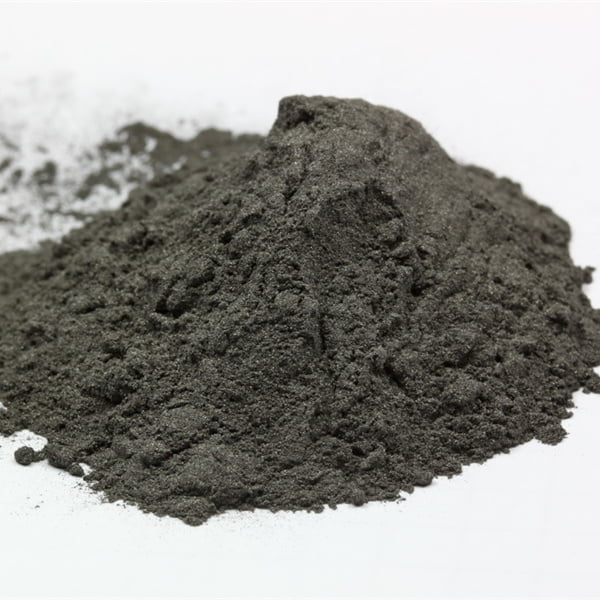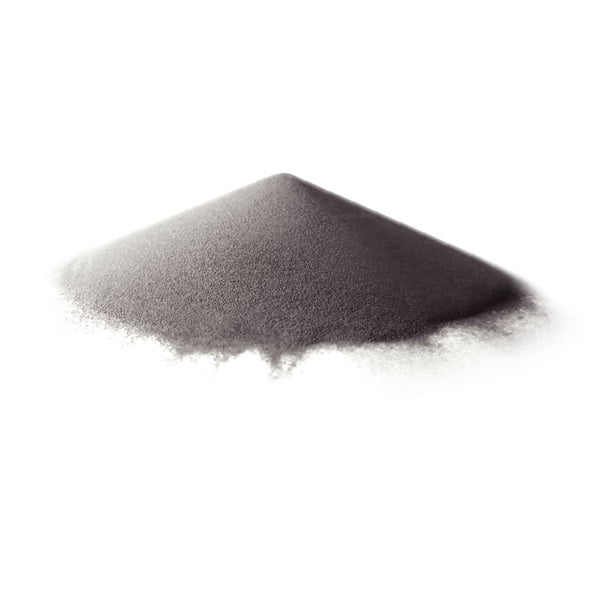Práškový materiál z kovové slitiny
Obsah
Prášky z kovových slitin jsou směsi jemných částic kovových prvků, které po konsolidaci vytvářejí vysoce výkonné součásti využívající přizpůsobené mechanické, tepelné, elektrické a korozní vlastnosti, které nejsou k dispozici u jednotlivých kovů. Tato příručka podrobně popisuje složení, výrobní metody, vlastnosti, aplikace, specifikace a srovnání široce používaných práškových slitin niklu, hliníku, oceli a titanu.
Přehled o Prášky z kovových slitin
Legování kombinuje výhodné vlastnosti dvou nebo více kovů - pevnost jednoho, odolnost proti korozi druhého a vysokou teplotní stabilitu třetího kovu - do matrice na míru navržené pro cílové aplikace.
Předlegované kovové prášky vyráběné s vlastnostmi jako:
- Vysoká pevnost díky sraženinám
- Tepelná stabilita zachovávající si pevnost při vysokých teplotách
- Odolnost proti oxidaci a opotřebení pro dlouhou životnost
- Biologická inertnost pro bezpečnost zdravotnických prostředků
- Řízená velikost/tvar částic napomáhající pokročilé výrobě
- Konsolidované do čistých tvarových dílů s minimalizací obrábění
Technika práškové metalurgie usnadňuje velkosériovou výrobu malých přesných dílů pro různá průmyslová odvětví.

Typy složení kovových slitin v prášku
Mezi široce používané varianty práškových slitin patří:
Tabulka 1: Složení a vlastnosti prášků běžných kovových slitin
| Slitina | Prvky | Vlastnosti s pákovým efektem | Aplikace |
|---|---|---|---|
| Slitiny niklu | Ni, Cr, Fe, Nb atd. | Odolnost proti korozi + teplu | Letecký a námořní hardware |
| Slitiny hliníku | Al, Cu, Mg, Si atd. | Pevnost při nízké hmotnosti | Automobilové díly, převodovky |
| Slitiny nástrojové oceli | Fe, Mo, Cr, V atd. | Zachování tvrdosti při vysokých teplotách | Vytlačovací formy, formy |
| Slitiny titanu | Ti, Al, V, Cu atd. | Pevnost + biokompatibilita | Chirurgické implantáty, letectví a kosmonautika |
| Žáruvzdorné slitiny | W, Mo, Ta, Nb atd. | Velmi vysoký bod tání | Vojenství, vesmír, jaderná energie |
Přizpůsobené kombinace železa, hliníku a titanu s legujícími prvky, jako je chrom, nikl, měď atd., pomáhají upravit galvanickou kompatibilitu, magnetismus a vodivost pro cílové potřeby výrobku.
Klíčové metody výroby práškových slitin
Tabulka 2: Přehled hlavních výrobních cest práškových slitin v komerčním měřítku
| Metoda | Proces | Charakteristika |
|---|---|---|
| Rozprašování plynu | Inertní plyn rozbíjí proud roztaveného kovu na jemné kapičky. | Sférické prášky s hladkým rozložením |
| Rozprašování vody | Vysokotlaký vodní paprsek rozkládá kovovou taveninu | Nepravidelná morfologie prášku |
| Plazmová atomizace | Plazmový oblouk roztaví vstupní surovinu na jemnější kapičky. | Velmi jemné, sférické prášky |
| Mechanické legování | Opakované svařování za studena a štěpení práškových surovin | Více slitin na míru |
| Elektrolýza | Řízené vrstevnaté usazeniny kovů z vodných roztoků | Porézní nepravidelné prášky |
Plynová atomizace umožňuje nejlepší kontrolu nečistot vhodnou pro reaktivní chemické slitiny, jako je titan a hliník. Vodní atomizace nabízí vyšší výkony pro nákladově citlivé objemy ocelových slitin. Plazmová atomizace dosahuje velikosti pod 20 mikronů.
Charakteristika a vlastnosti
Tabulka 3: Typické vlastnosti komerčních prášků z kovových slitin
| Vlastnictví | Charakteristika |
|---|---|
| Složení | Možnost legování na zakázku s >2 kovy |
| Velikost částic | Typické velikosti 15-150 mikronů |
| Tvar částic | Různé - kulovité, nepravidelné, dendritické |
| Hustota poklepání | Slitiny mají vyšší hustotu >3 g/cc, což napomáhá jejich zhutnění. |
| Průtoky | Účinky na roztíratelnost; >25 s/50 g napomáhá vrstvení |
| Zdánlivá hustota | Úzká distribuce zlepšuje konzistenci hustoty |
| Stlačitelnost | Slitiny mají vyšší hustotu za zelena a při spékání |
| Propustnost | Závisí na magnetickém stavu hotové slitiny |
| Tvrdost | Legování zvyšuje tvrdost oproti čistým kovům |
Kromě chemické syntézy hraje morfologie prášku stejně důležitou roli při určování chování při konsolidaci a následně při úspěšném použití v technologiích tavení v práškovém loži, tryskání pojiva a vstřikování kovů, kde jsou zásadní volně tekoucí vlastnosti.
Aplikace a použití Prášky z kovových slitin
Klíčové kategorie výrobků využívajících práškové slitiny zahrnují díky rozšířené svobodě přizpůsobení, která je u tradičních předlitků nedostupná:
Tabulka 4: Hlavní oblasti použití práškových kovových slitin
| Sektor | Aplikace |
|---|---|
| Aerospace | Lopatky turbíny, kování draku, převody |
| Automobilový průmysl | ojnice, hnací hřídele převodovky |
| Lékařský | Zubní korunky, implantáty, protetika |
| Námořní | Oběžné kolo čerpadla, vrtule, potrubí pro slanou vodu |
| Ropa a plyn | Hlubinné spojky, ventily, náhradní díly pro vrtné práce |
| 3D tisk | Lehké mřížky, bionické tvary s vysokou tvrzenou pevností |
Přizpůsobená rovnováha tvrdosti, odolnosti proti korozi a rozměrové přesnosti činí práškové slitiny atraktivními pro výrobu kritických rotačních součástí v obraně, vesmíru, biomedicíně a dopravních prostředcích.
Prášek z kovové slitiny Specifikace
Složení práškové slitiny odpovídá certifikovaným specifikacím a zajišťuje spolehlivý výkon.
Tabulka 5: Specifikace práškových slitin v průmyslovém, leteckém a obranném odvětví
| Slitina | Běžné specifikace |
|---|---|
| Slitiny niklu | AMS 4777, 4779 atd. |
| Ocel | Vlastní směsi nástrojové oceli H a D |
| Hliník | AMS 4010, AMS 4000 atd. |
| Slitiny titanu | AMS 7001, 7004 atd. |
| Kobaltové slitiny | AMS 5887, ASTM B776 atd. |
Tyto specifikace předepisují přijatelné zkušební metody, postupy odběru vzorků, rozsahy kritérií přijatelnosti a protokoly pro dokumentaci šarží prášku.
Jak ASTM International, tak jednotliví výrobci definují pro kritické aplikace související třídění podle velikosti, chemickou analýzu, charakteristiky částic a limity mechanických a fyzikálních vlastností po konsolidaci.
Globální dodavatelé a informace o cenách
Tabulka 6: Přední mezinárodní výrobci práškových slitin a cenová rozpětí:
| Společnost | Třídy slitin | Cenové rozpětí za kg | |
|---|---|---|---|
| Höganäs | Ocel, nikl | $5-15 | |
| Sandvik | Osprey | Titan, nikl, kobalt | $50-150 |
| Tesař | Titan, kobalt, ocel | $40-100 | |
| Praxair | Nikl, ocel, kobalt | $15-60 | |
| Práškové kovy ATI | Titan, nikl, železo | $30-90 |
Ceny závisí na potřebě certifikace výrobků, nakupovaných objemech, specialitě složení a stupni pokročilosti atomizace při výrobě prášku a následném zpracování.

Srovnávací výhody a nevýhody
Tabulka 7: Výhody a nevýhody ve srovnání s litými nebo kovanými kovovými protějšky
| Výhody | Nevýhody |
|---|---|
| Všestrannější | Další kroky potřebné ke konsolidaci |
| Vynikající rovnoměrnost | Nižší houževnatost bez HIP |
| Přizpůsobitelné komponenty | Maximální velikost je omezena |
| Snížení množství odpadu z tvarování sítě | Vyšší náklady v současné době |
| Pružnost tepelného zpracování | Problémy s povrchovou úpravou |
U složitých nebo integrovaných konstrukcí z více materiálů vyráběných v menších objemech, jako jsou ortopedické kolenní klouby zahrnující polymery a kovové slitiny dohromady, nabízí připravenost na aditivní výrobu rychlejší a levnější cesty.
Často kladené otázky
Otázka: Jaká je výhoda použití předem legovaného prášku oproti samostatnému míchání práškových prvků?
Předběžné legování zajišťuje rovnoměrnost požadovaného chemického složení v celém procesu xyz, snižuje pravděpodobnost variability výkonu jednotlivých komponent v jednotlivých šaržích a zabraňuje odchylkám způsobeným nesprávnými poměry míchání.
Otázka: Jaké konsolidační procesy přeměňují práškové slitiny na pevné součásti?
Mezi hlavní metody patří spékání, vstřikování kovů, izostatické lisování za tepla a aditivní výrobní techniky, jako je laserová fúze v práškovém loži s následnou infiltrací. Výběr závisí na odvětví, velikosti výrobku, potřebách složitosti a ekonomice.
Sdílet na
MET3DP Technology Co., LTD je předním poskytovatelem řešení aditivní výroby se sídlem v Qingdao v Číně. Naše společnost se specializuje na zařízení pro 3D tisk a vysoce výkonné kovové prášky pro průmyslové aplikace.
Dotaz k získání nejlepší ceny a přizpůsobeného řešení pro vaše podnikání!
Související články

Vysoce výkonné segmenty lopatek trysek: Revoluce v účinnosti turbín díky 3D tisku z kovu
Přečtěte si více "O Met3DP
Nedávná aktualizace
Náš produkt
KONTAKTUJTE NÁS
Nějaké otázky? Pošlete nám zprávu hned teď! Po obdržení vaší zprávy obsloužíme vaši žádost s celým týmem.

Kovové prášky pro 3D tisk a aditivní výrobu
SPOLEČNOST
PRODUKT
kontaktní informace
- Město Qingdao, Shandong, Čína
- [email protected]
- [email protected]
- +86 19116340731














